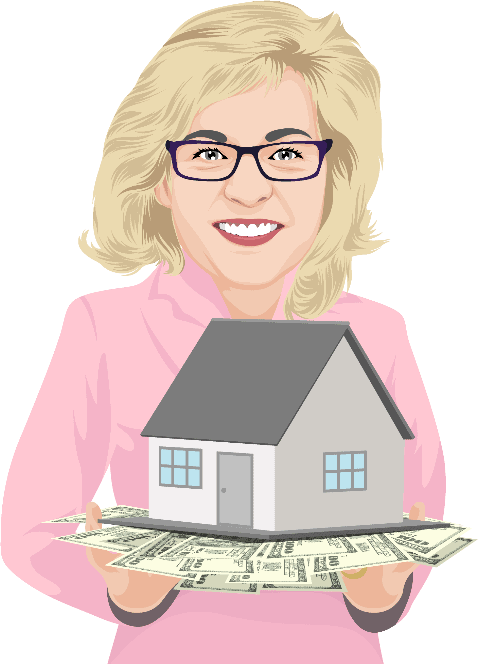Did you know that staged homes sell 87% faster and for 20% more compared to non-staged homes? You might be ready to take out your wallet now, but staging your home can just as easily backfire.
Read on to learn common, costly mistakes when it comes to home staging. We’ll let you know how you can best avoid them for a successful, stress-free sale!
1. Not Choosing the Right Realtor
Staging your home won’t matter if you don’t have a trustworthy, reliable realtor to market it! Realtors with consistent, proven track records will help you save money in the long run by advising and providing necessary feedback.
Staging your home should be a supplement to selling your home effectively and pricing it reasonably. Without effective marketing and smart pricing, no one will see the beautiful staging you or your realtor spent hundreds of dollars for.
2. Poor Home Conditions
First impressions are everything, and having a clean, clutter-free home is the foundation for success. However, some homeowners and realtors believe that staging a home with pleasing scents, expensive decor, and new furniture can cover up imperfections that they haven’t addressed.
These superficial changes won’t improve the poor impression a stained carpet, dated wallpaper, crowded furniture, or pet smells will elicit. It’s important to start with decluttering and depersonalizing your home first, and then decide if staging is worth the investment.
3. Not Choosing the Right Stager
Choosing the right professional stager as just as important as finding the right realtor. Before you hire them, take a look at their portfolio and see if they provide before and after comparisons.
It’s also important to have an initial consultation so they can describe their vision for the space. If you hire an inexperienced or ineffective stager, you can actually drive away potential buyers during open houses! Here are a few staging mistakes to avoid.
Over-Designing
Buyers need to be able to visualize how they would make the house their own after they move in. This becomes difficult and even impossible if the space is over-designed.
There needs to be breathing room and subtle decor elements so that the house itself is still the main focus. When a house is over-designed, you can’t help but focus on the decor instead.
Not Staging to Scale
Choosing the right sized furniture is just as important as their design and quality. For instance, furniture that’s too small or too large will distort the true size of a room, making it seem smaller than it actually is.
A good stager will choose appropriately sized furniture so that potential buyers can get a feel for the flow of a home and how it can actually accommodate themselves and their families.
Playing It Safe
While subtlety and scale is important, you also want your house to stand out. Potential buyers can be looking at multiple houses a day, and if your home is too neutral it will leave less of an impact.
The best way to determine if your staging is too neutral is to ask yourself whether it still feels like a home, or as a commercial space. If it feels too cold or commercial, you’ll know that it’s lacking some unique touches such as accent walls and colors.
4. Not Knowing Your Audience
It’s important that you, your realtor, and your stager if you choose to hire one are on the same page when it comes to your potential buyer. For instance, if you live in a community consisting mostly of senior citizens, you’ll know that the staging needs to be more conservative.
In contrast, a bungalow at the outskirts of a city could have more millennial appeal. Removing your own tastes from the process may be hard, but staging with your buyer’s tastes in mind will be more effective in the long run.
5. Wasting Money on Renovations
While you’re selling your house, it can be tempting to go overboard and want to update everything, from the flooring to your appliances. However, it’s recommended to focus on small updates such as painted cabinets, new hardware, and updated light fixtures.
Once you make these small but noticeable improvements, you can have a discussion with your realtor whether more upgrades need to be made.
6. Forgetting the Outdoors
It’s easy to overlook your front and backyard when your focus is on staging the interior. Keeping your bushes pruned, planting seasonal flowers, cutting the grass, and eliminating pet or children’s toys can substantially improve a potential buyer’s first impression.
Moreover, an unkempt front or backyard will draw attention to the additional maintenance required for those areas, which might turn off some buyers. It’s best to have all your bases covered!
Staging Your Home for Success
As you can see, staging your home requires some preparation. Decluttering your space, using the right interior design elements and principals, and taking your potential buyer’s tastes into account all go into home staging that will help rather than harm your marketing.
Some of these mistakes aren’t the easiest to spot, especially when you’ve been living in your house for years. This is why finding dependable, experienced professionals to advise you and provide feedback is incredibly important when staging your home.
Want to sell your house in only 7 to 10 days? Fill out this form to get in contact with creative, experienced real estate investors who can do just that!


